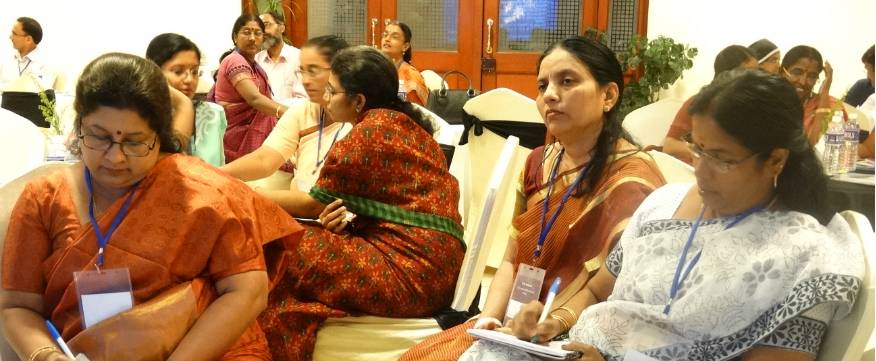
Strategic leadership and school improvement
Research 21 Jan 2015 5 minute readImprovement in teaching and learning depends on the development and empowerment of heads of schools and their teachers, as Anit Cherian explains.
Strategic leadership and school improvement
Recent educational reform in India driven by the 2009 Right of Children to Free and Compulsory Education Act, government policy initiatives in support of this and various other educational reforms initiated by the Central Board of Secondary Education (CBSE) mean that the development and empowerment of heads of schools and their teachers is crucial.
To support such development and empowerment, CBSE has empanelled several training agencies to conduct various capacity building programs for CBSE schools across India to improve outcomes for students in terms of achievement and wellbeing.
CBSE selected the Australian Council for Educational Research (ACER), through ACER India, to train school leaders in a three-day, non-residential strategic leadership program. The program draws on international evidence, including ACER’s research on effective practices in school leadership, and the National School Improvement Tool.
What is school improvement?
School improvement typically focuses on areas of school practice that support improved teaching and learning. The National School Improvement Tool assists schools to review and reflect on their efforts to improve the quality of classroom teaching and learning. It supports school-wide conversations – including conversations with parents and families, school governing bodies, local communities and students themselves – about aspects of current practice, areas for improvement and evidence that progress is being made.
The National School Improvement Tool does not describe everything that effective schools do, but focuses on those practices that are most directly related to school-wide improvements, and thus outcomes for students. In this sense, the National School Improvement Tool can be thought of as a core element of more comprehensive school improvement programs, frameworks and initiatives.
Strategic leadership on school improvement
The key objective of the strategic leadership program is to assist school leaders by training them in leadership skills and by giving them a leadership framework that enables professional learning and ensures effective capacity building within their school.
Working with more than a hundred participants to date, the program has operated in Delhi, Hyderabad, Coimbatore and Hamirpur in Himachal Pradesh.
According to Professor Geoff Masters AO, Chief Executive of ACER, high-performing education systems understand the crucial role of school leadership in educational reform.
‘Outstanding school leaders are capable of turning around underperforming schools and dramatically lifting student achievement levels,’ Professor Masters says.
‘School leaders of this kind are passionate about their commitment to improving outcomes for students. They set high expectations for learning; provide clarity about what teachers should teach and students should learn; and work to build school-wide professional teams focused on studying and improving the quality of student learning throughout the school.
’The strategic leadership program begins with what is known about highly effective school leadership – the kinds of leadership behaviours and practices that are correlated with improved teaching, learning and student performance. These behaviours and practices are described in the nine domains of the National School Improvement Tool.
‘With its focus on improved teaching and leadership, the ultimate objective of the program is to make a difference for every learner,’ Professor Masters says.
Characteristics of highly effective schools
Highly effective schools are characterised by a range of features, including:
- high expectations
- a focus on supportive relationships in the school
- targeted use of human and physical resources within and beyond the school
- expert teaching teams, with a shared commitment to supporting student learning and highly effective teaching, and
- leadership team support for staff to meet the needs of individual learners.
Schools involved in the strategic leadership program each frame their own action plan for school improvement and present this to their peers in the program. This enables the group as a whole to analyse best practices and their implementation, with a focus on sharing openly to develop a collective understanding.
Next steps
ACER India provides ongoing support for schools and systems in the development and implementation of reviews using the National School Improvement Tool. Following school reviews, expert school reviewers provide an evaluation of a school’s teaching and learning practices.
For each of the nine domains of the National School Improvement Tool, a school’s practices are rated as low, medium, high or outstanding, based on the observations of the school reviewer. Before reaching a rating, school reviewers meet with senior staff of the school to discuss school practices, inspect records and other evidence provided by the school. Upon completion of the school review, the lead reviewer works with the school leadership team to develop a school improvement plan based on the findings of the school review report.
Further information:
For more about the strategic leadership program or school reviews and the National School Improvement Tool, visit < www.acer.edu.au/school-improvement >
In Australia, email < Robert.Marshall@acer.edu.au >
In India, email < Anit.Cherian@acer.edu.au >
